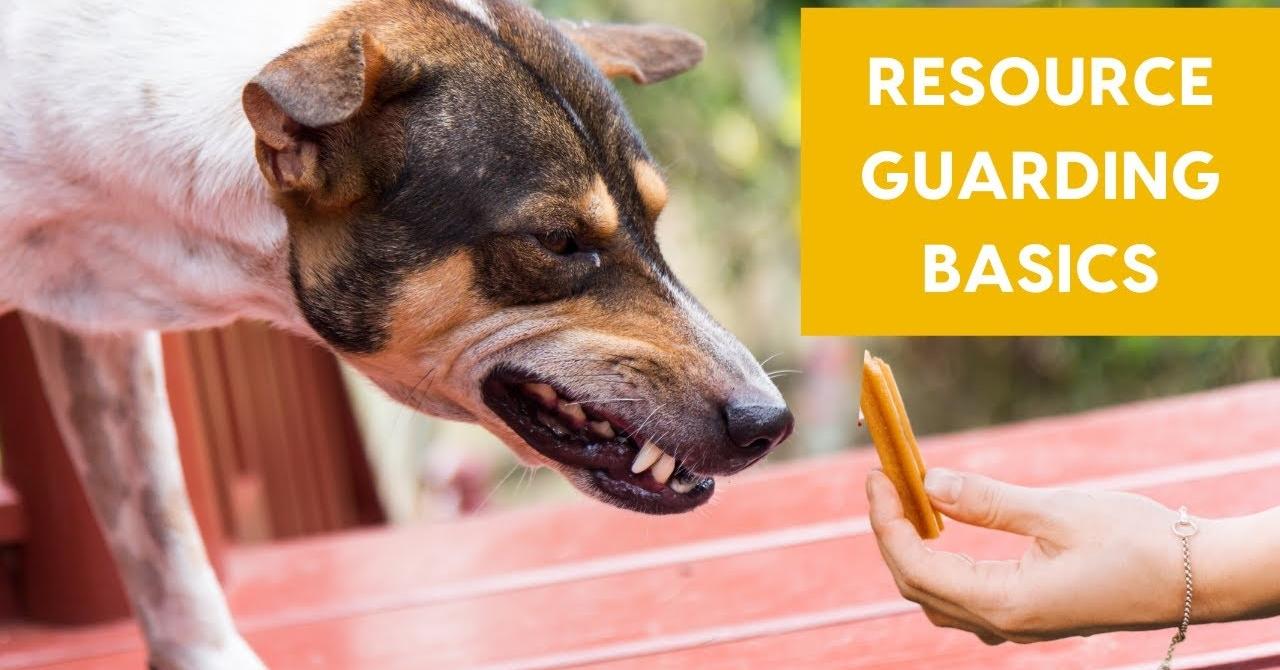Most dogs are sweet, gentle souls who want nothing more than to live peacefully with their families. However, one behaviour that rears its ugly head for most dogs is called resource guarding. Resource guarding is a behavioral issue where a dog shows protective or aggressive tendencies towards others—be it humans or other animals—when in possession of something they value.
This ‘resource’ could range from food, toys, and space, to even people. While it may seem alarming, understanding the psychological roots and contributing factors of resource guarding is essential for effective management and prevention.
Psychological Underpinnings of Resource Guarding
Resource guarding is rooted in both instinctual and learned behaviors. From a psychological standpoint, it’s tied to the dog’s basic survival instincts. In the wild, dogs needed to protect their food and resources to survive. This behavior, though less necessary in a domestic setting, is often an intrinsic part of a dog’s psyche.
However, learned behaviors also play a significant role. Dogs that have experienced trauma or competition for resources may develop guarding behaviors as a response to these past experiences. A dog who had to compete for food with littermates, for example, might be more prone to guard their food in a new home.
Influence of Breed and Temperament
Certain breeds like French Bulldogs or German Shepherds may be more predisposed to resource guarding due to genetic and temperament factors. Breeds historically used for guarding or herding, for instance, may have a heightened sense of protectiveness over resources. However, it’s important to note that resource guarding can manifest in any breed, and individual temperament plays a significant role.
Strategies for Prevention and Management
Preventing and managing resource guarding involves a blend of positive reinforcement and behavioral modification techniques. Key strategies include:
Desensitization and Counter-Conditioning: Gradually exposing the dog to the situation that triggers guarding while providing positive experiences can help reduce the behavior.
Obedience Training: Basic commands like ‘leave it’ or ‘drop it’ can be effective in managing guarding situations.
Avoiding Punishment: Punishing a dog for resource guarding can exacerbate the problem. Positive reinforcement is more effective.
Environmental Management: Managing the environment to reduce the triggers for resource guarding, such as feeding the dog in a private space, can be helpful.
Importance of Early Socialization and Training
Early socialization and training play a pivotal role in reducing the likelihood of resource guarding. Exposing puppies to different situations, people, and animals in a positive way can help prevent the development of guarding behaviors.
Recognizing Early Signs of Resource Guarding
Early signs can include stiffening, growling, or snapping when someone approaches their food or toys. Recognizing these signs early can aid in prompt intervention.
Real-Life Examples and Case Studies
Let’s take a look at two interesting examples of resource guarding that provide further insight into the issue and its management.
Case Study: Pebbles
Pebbles, a dog adopted by Cristina, exhibited guarding behavior around her water bowl. Initially, Pebbles would stand by her bowls whenever someone approached, and over time, she became more vocal, including growling at Cristina. The situation escalated to a biting incident when Cristina tried to fill the water bowl.
The key to addressing Pebbles’ behavior involved building her confidence and controlling her environment to eliminate anxiety. This approach, coupled with training to strengthen communication and leadership between Pebbles and Cristina, successfully resolved the resource guarding issue. The case underscores the importance of addressing such behaviors promptly, focusing on building confidence and clear communication.
Case Study: Roo
Roo, adopted by Taylor, showed mild signs of guarding her food and water bowls, as well as rawhides, not only towards her owner but also towards guests and her cat siblings. The behavior escalated to lunging at one of the cats and growling at Taylor.
The training focused on establishing obedience and control, setting Roo up for success through positive, reward-based training. This structure allowed Roo to understand the benefits of calm behavior, reinforcing trust between her and Taylor. The case illustrates that resource guarding can escalate if not addressed, emphasizing the importance of training that builds confidence and trust between the dog and the owner.
These cases highlight that resource guarding is a behavior that can stem from anxiety and a lack of confidence. Addressing it requires a holistic approach that includes building the dog’s confidence, establishing clear communication and leadership, and implementing consistent, positive training methods. It’s also evident that resource guarding can manifest in various forms and intensities, and each case requires a tailored approach to effectively resolve the behavior.
Conclusion
Understanding resource guarding in dogs is crucial for many dog owners. Recognizing that this behavior stems from a dog’s instinctual and learned experiences is key. Dog owners can effectively address and manage resource guarding, but must also recognise when it’s time to bring in the professionals.

